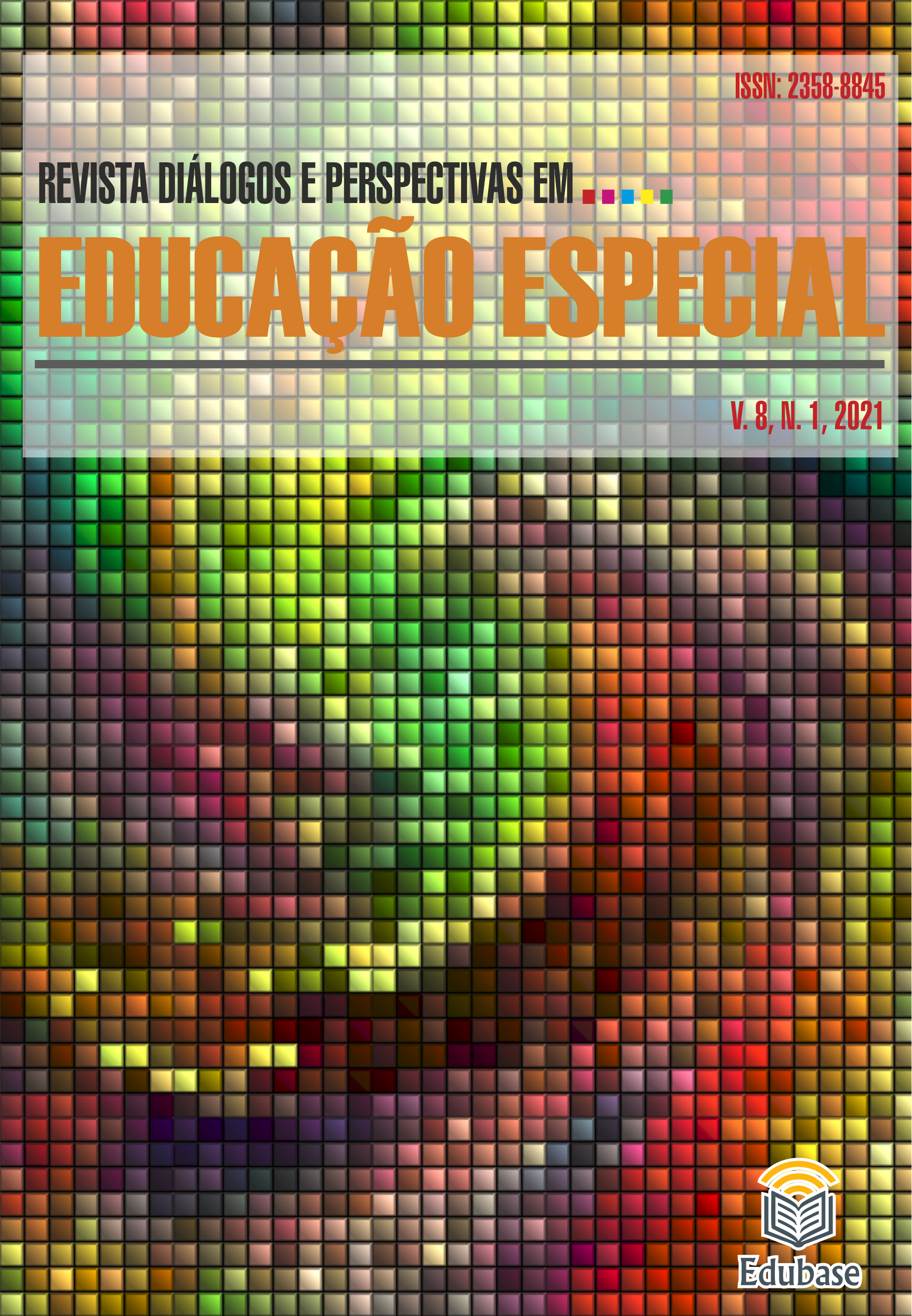Tactile models as alternative methodology for botanical teaching
DOI:
https://doi.org/10.36311/2358-8845.2021.v8n1.p83-94Keywords:
Botany teaching, Visually impaired, Inclusive education, Student with Special Educational Needs (SEN)Abstract
Botany consists of studying plants, and sometimes are necessary equipment such as microscopes and stereo microscopes that are inaccessible for elementary school. The botany stigma is resultant of tradicional methodology and the scenario is even more adverse for students with Special Educational Needs (SEN), such as the visually impaired. To improve teaching in disciplines such as botany, that has content whit a complex approach, teachers and researchers have joined forces to develop alternative and inclusive methodologies. The present work aimed to evaluate the realization of practical activities such as the elaboration and use of tactile models in the teaching-learning process and as a form of Inclusive Education. The work was developed in a class from the 7th of elementary school in Paulista-PE, in which data collection was done through questionnaires applied before and after the practical activity in addition to sensitivity tests using tactile models. The results obtained revealed that the development and use of didactic models were positive for the teaching of botany and for the students, with or without vision, and expanded their views and concepts about plants and bryophytes. The method of making the models by the themselves allowed the students to develop other skills such as creativity and improve their ability to interact with colleagues and teachers, contributing to their training as educators and citizens.
Downloads
References
AMIRALIAN, Maria Lúcia Toledo Moraes. Sou cego ou enxergo? As questões da baixa visão. Educar em Revista, Paraná, n. 23, p. 15-28, 2004.
AREND, Felipe Lohmann; DEL PINO José Claudio. Uso de questionário no processo de ensino e aprendizagem em biologia. Revista de Ensino de Biologia, v. 10, n. 1, p. 72-86, 2017.
BRASIL. Declaração de Salamanca e linha de ação sobre necessidades educativas especiais. 2. ed. Brasília, DF: Corde, 1997.
CAMPOS, Márcia de Borba; SILVEIRA, Milene Selbach; SANTAROSA, Lucila Maria Costi. Tecnologias para educação especial. Informática na educação: Teoria & Prática, Porto Alegre, vol. 1, n. 2, p. 55-72, 1999.
FRIAS, Elzabel Maria Alberton; MENEZES, Maria Christine Berdusco. Inclusão escolar do aluno com necessidades educacionais especiais: contribuições ao professor do ensino regular. Programa de Desenvolvimento Educacional – PDE, Faculdade de Educação Ciências e Letras de Paranavaí e Universidade Estadual de Maringá, p. 1462-8, 2008.
LIPPE, Eliza Marcia Oliveira; CAMARGO, Éder Pires de. Ensino de ciências e deficiência visual: discursos e práticas inclusivas para a formação de professores. In: CAMARGO, Éder Pires. Ensino de ciências e inclusão escolar: investigações sobre o ensino e a aprendizagem de estudantes com deficiência visual e estudantes surdos. Curitiba, PR: CRV, 2016. p. 232.
MICHELOTTI, Angela; LORETO, Elgion Lucio da Silva. Utilização de modelos didáticos tateáveis como metodologia para o ensino de biologia celular em Turmas inclusivas com deficientes visuais. Revista Contexto & Educação, v.34, n.109, p. 150-179, 2019.
MIRANDA, Arlete Aparecida Bertoldo. Educação Especial no Brasil: desenvolvimento histórico. Cadernos de História da Educação, v. 7, p. 29-42, 2008.
NOGUEIRA, Antônio Carlos de O. Cartilha em quadrinhos: um recurso dinâmico para se ensinar botânica. In: Encontro “Perspectivas do Ensino de Biologia”, 6., 1997, São Paulo. Coletânea. São Paulo: USP, 1997. p. 248-249.
NUNES, Sylvia; LOMÔNACO, J. F. B. O aluno cego: preconceitos e potencialidades. Psicologia Escolar e Educacional (Impresso), v. 14, n. 1, p. 55-64, 2010.
PERINI, Monique; ROSSINI, Josiene. Aplicação de modelos didáticos no ensino de biologia floral. International Scientifc Journal, v. 13, n. 3, p. 58-57, 2019.
PIETRICOSKI, Luciana Borowski; MENIN, Martha. A inclusão de alunos com deficiências visuaisno ensino de ciências e biologia: confecção de modelos didáticos para o ensino de citologia. In: Congresso Internacional de Tecnologia Na Educação, 13., 2015, Pernambuco. Anais[...]. Pernambuco: Senac, 2015. p. 1-10.
RAVEN, F. Evert; EICHHORN, Susan. E. Raven Biologia vegetal. 8ª ed. Rio de Janeiro: Guanabara Koogan, 2014. 856 p.
SILVA, Patrícia Gomes Pinheiro. O ensino da botânica no nível fundamental: um enfoque nos procedimentos metodológicos. 146p. Tese de doutorado, Universidade Estadual Paulista, Bauru. 2008.
SILVA, Juliana Nascimento; GHILARD, Natalia Pirani. Botânica no Ensino Fundamental: diagnósticos de dificuldades no ensino e da percepção e representação da biodiversidade vegetal por estudantes. Revista Electrónica de Enseñanza de las Ciencias. vol. 13, n. 2, p. 115-136, 2014.
Downloads
Published
Issue
Section
License
Copyright (c) 2021 REVISTA DIÁLOGOS E PERSPECTIVAS EM EDUCAÇÃO ESPECIAL

This work is licensed under a Creative Commons Attribution 4.0 International License.
- The works published in RDPEE are the sole responsibility of their authors. The authors grant the journal the right of first publication, with the work simultaneously licensed under the Attribution-CC BY, which allows distribution, remixing, adaptation and creation from the work with recognition of the authorship and initial publication in this journal.
- The authors consent that their articles may be incorporated by RDPEE into indexers and databases that currently exist or may exist in the future; the owners of these databases may reproduce, transmit and distribute the texts, in whole or in part, in any form or means of electronic transmission that exists or may be developed in the future.
Qualis Capes (2017-2020)
Education: B1




